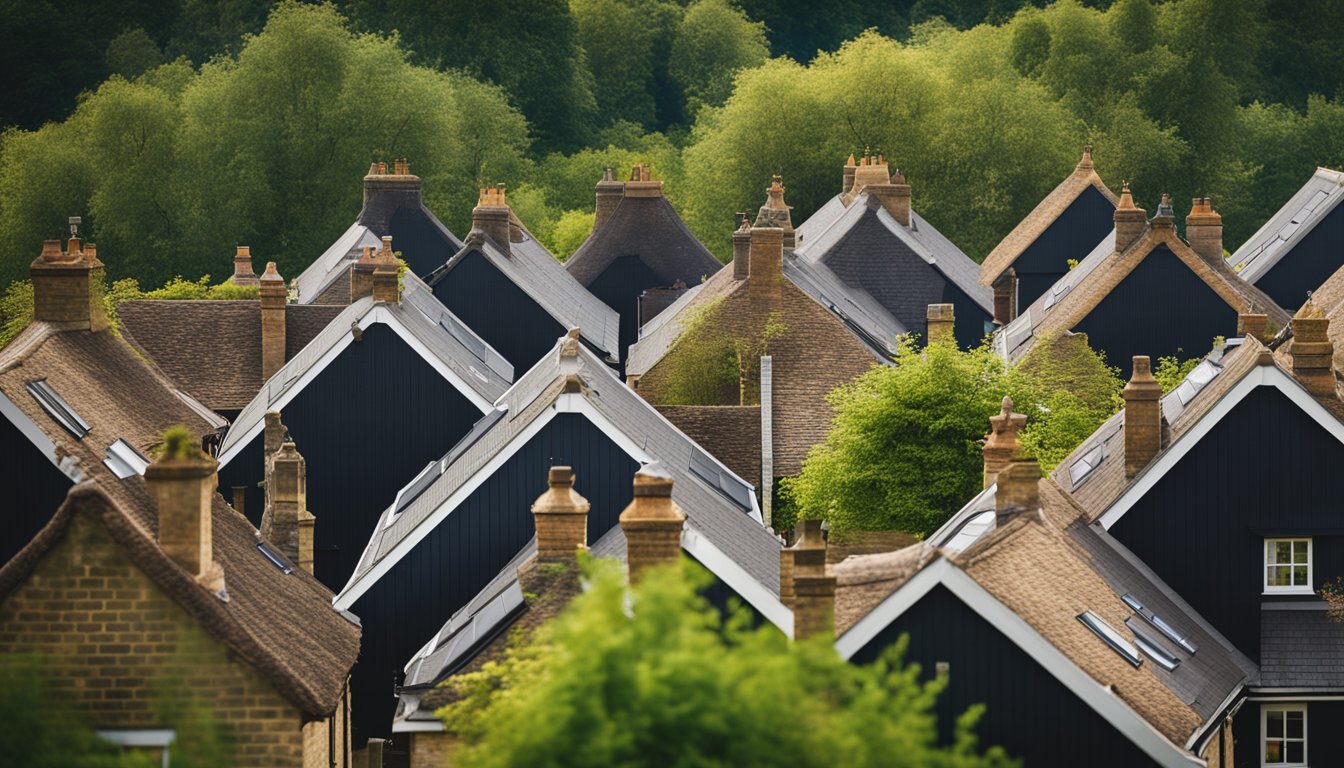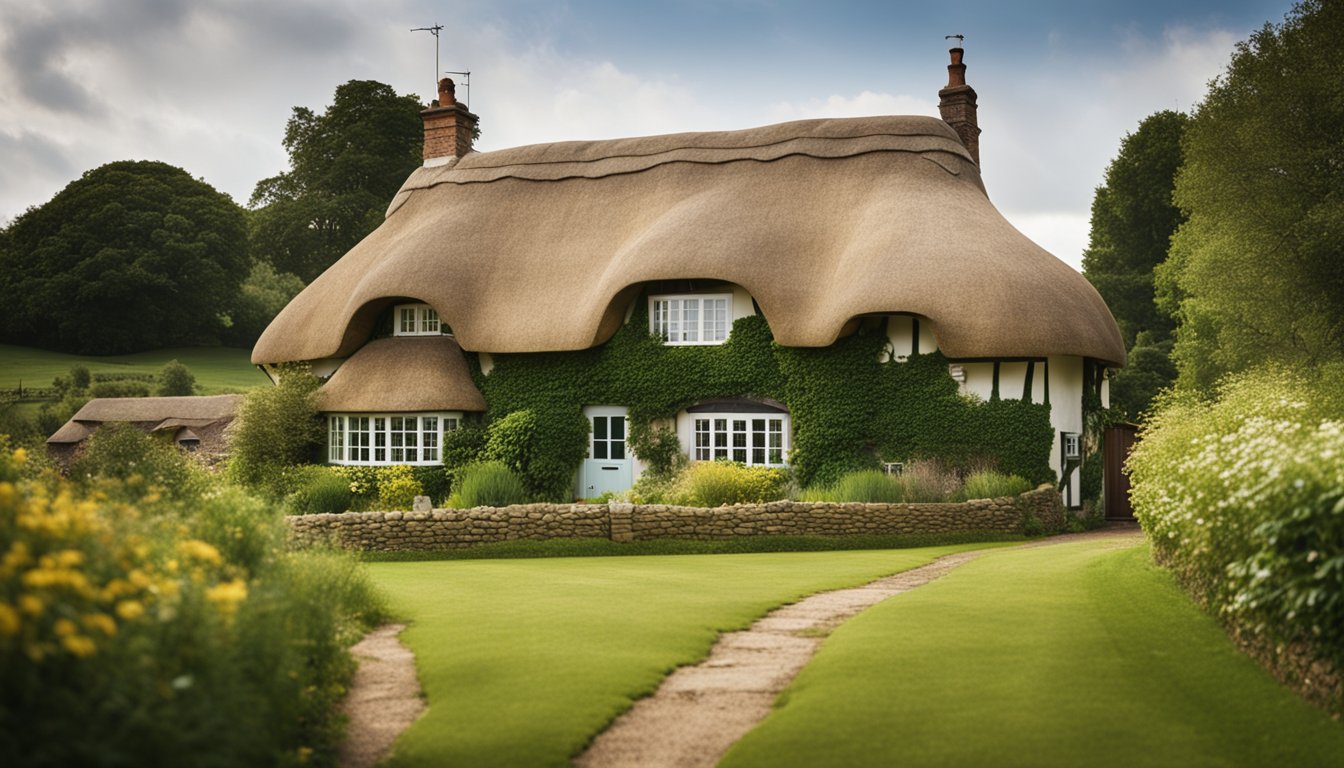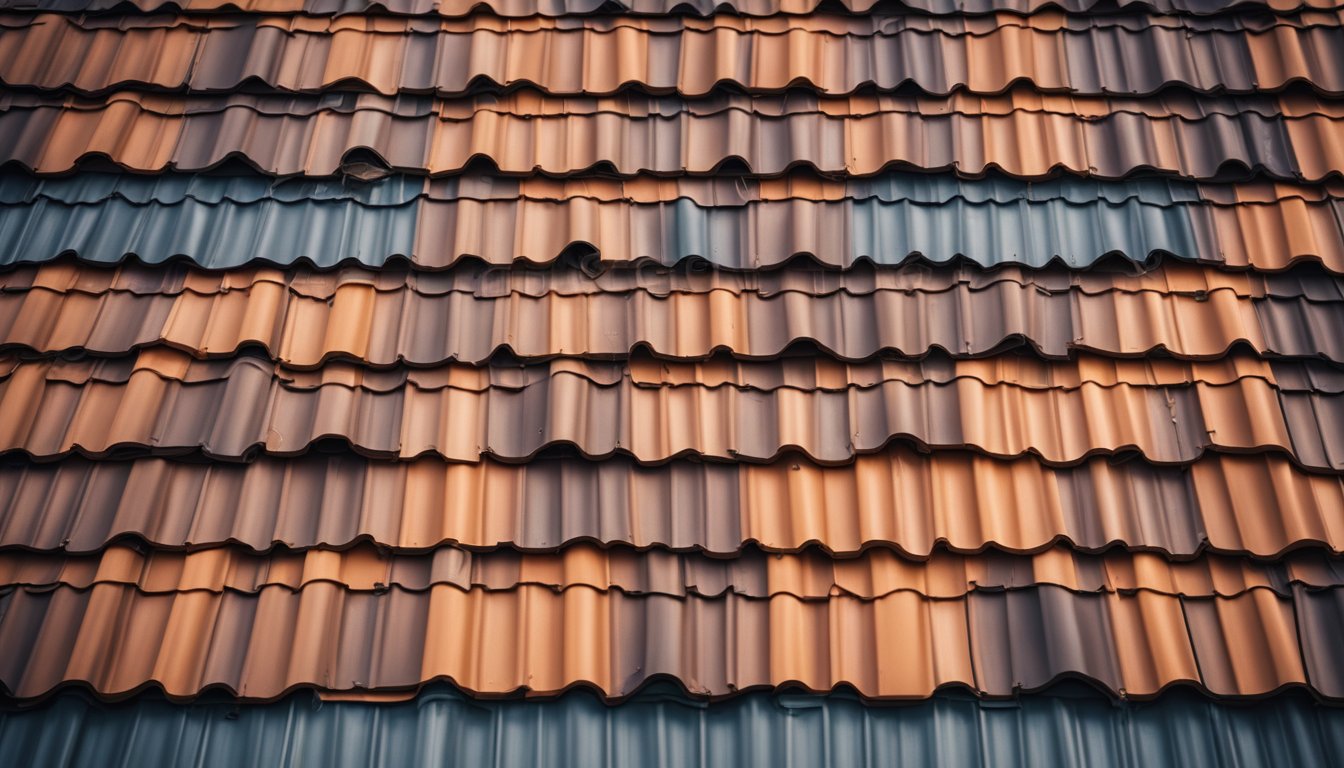Late updated: 30 Oct 2024 15:10
Written by: Oliver Bennett
Exploring Alternative UK Roofing Styles: A Guide to Modern and Traditional Designs
Exploring alternative roofing styles in the UK reveals a fascinating intersection of architecture, sustainability, and modern design. Our nation offers a wide variety of roofing materials and styles, each with distinct advantages that blend aesthetic appeal with environmental considerations. From the classic gable roofs, known for their simplicity and effectiveness, to more contemporary designs like flat and eco-friendly green roofs, there are numerous alternatives that cater to both traditional and modern tastes.

Roofing not only serves a functional role in sheltering us from the elements, but it also significantly contributes to the character of our homes and public buildings. Many of these styles reflect the architectural heritage of the UK, while others embrace technological innovations aimed at improving energy efficiency and reducing environmental impact. The choice of roofing style can be influenced by factors such as regional climate, property type, and personal preference, making the exploration of these styles a journey of personal discovery and practical decision-making.
As we delve into these diverse roofing options, it is essential to consider not just the visual appeal but the broader implications in terms of energy efficiency and sustainability. Whether opting for the long-lasting durability of slate tiles or the eco-friendly attributes of a living roof, every decision must align with environmental aspirations and aesthetic goals.
Key Takeaways
- Various roofing styles offer a blend of aesthetic appeal and sustainability.
- Roofing choices can influence energy efficiency and architectural character.
- Each style reflects both traditional and modern British architectural trends.
Fundamentals of UK Roofing

Our exploration of UK roofing covers both time-honoured techniques and contemporary innovations, focusing on materials' properties such as durability, longevity, and sustainability. We aim to provide a thorough understanding of various roofing options, maintenance needs, and the environmental impact associated with different styles.
Traditional Roofing Techniques
In the UK, traditional roofing techniques often involve materials like slate and clay tiles. Slate roofs are lauded for their exceptional durability and timeless appearance. They offer impressive fire-resistant and waterproofing capabilities, contributing to their longevity.
Clay tiles are another popular choice, known for their aesthetic appeal and robust insulation properties. These materials are frequently paired with classic roof styles such as gable, hip, and mansard roofs, which have proven effective in various weather conditions.
Maintenance is crucial to preserve these traditional materials, ensuring they retain their structural integrity and visual charm.
Modern Roofing Innovations
Recent advancements have introduced a variety of modern roofing options. Innovations like synthetic slate, metal roofing, and rubber roofing now offer alternatives to natural materials. Synthetic slate mimics natural slate's look while being lighter and sometimes more cost-effective.
Metal roofing provides excellent durability and can be shaped into various styles. It requires minimal maintenance compared to traditional materials and often includes fire-resistant features. Rubber roofing delivers high-grade waterproofing capabilities, making it ideal for flat roofs.
Additionally, eco-friendly options such as solar panels and green roofs are gaining traction. These choices contribute to reducing a building’s carbon footprint, highlighting the shift towards sustainable roofing solutions.
Material Considerations for Durability and Longevity
Selecting the right roofing material involves evaluating factors like insulation, waterproofing, and expected lifespan. Durable options like asphalt shingles and metal roofing offer resilience against harsh weather while being relatively low-maintenance.
For those prioritising longevity, slate and clay tiles stand out but require more upkeep. Synthetic alternatives are often lauded for combining longevity with lower environmental impact.
The push towards eco-friendliness has increased interest in materials with low carbon footprints. Thus, the combination of sustainability and performance is crucial in making informed decisions about roofing materials.
Each roof must be tailored to suit the specific needs of the building and its environment, balancing functionality, aesthetics, and sustainability.
Roofing Aesthetics and Environmental Impact
In the UK, alternative roofing styles offer diverse choices combining visual charm with environmental benefits. These roofing options not only enhance the architectural landscape but also incorporate aspects of sustainability, energy efficiency, and cost considerations.
Incorporating Sustainable Practices
Incorporating sustainable practices in roofing covers a range of eco-friendly options. Green roofing, also known as living roofs, creates a layer of vegetation atop a building, promoting biodiversity and urban gardening. This not only enhances aesthetic appeal but also supports wildlife habitats in urban areas. Utilizing recycled materials and sustainable resources further boosts environmental benefits, contributing to a circular economy.
Solar tiles integrate renewable energy into roofing, offering a sleek design without sacrificing functionality. These tiles enable households to generate electricity directly from their roofs, combining eco-friendliness with significant cost savings over time. Embracing sustainable practices leads to improved weather resistance and supports broader green infrastructure goals.
Enhancing Energy Efficiency
Roofing styles maximising energy efficiency are pivotal in reducing energy consumption and utility bills. Insulation plays a vital role, with eco-friendly roofing options such as solar tiles and green roofs improving thermal performance. This not only conserves energy but also mitigates the urban heat island effect, benefiting the local climate.
Solar roofing, as an example, provides renewable energy while reducing reliance on fossil fuels. Efficient designs aim to reduce heat loss in winter and minimise heat gain in summer. For us, selecting materials that reflect or retain heat effectively can enhance comfort and reduce energy costs substantially.
Balancing Cost and Aesthetic Appeal
When balancing cost with aesthetic appeal, homeowners consider low maintenance and affordability. Eco-friendly roofing materials offer diverse options that fit various budgets, showcasing styles that enhance properties without excessive expenditures. Often, the decision also hinges on long-term savings achieved through energy-efficient and durable materials.
Budget constraints are counterbalanced by the aesthetic and functional advantages of these materials, offering a sophisticated look paired with practical benefits. Thoughtful selection of eco-friendly and weather-resistant roofing materials can ensure a balance between cost-effectiveness and visual attractiveness, leading to a fulfilling and responsible choice in roof replacement.
Frequently Asked Questions

Our exploration of alternative roofing styles in the UK covers a wide range of options, each with unique qualities and practical benefits. Understanding the specifics of each type, from slate to green roofs, enhances our ability to make informed choices tailored to individual preferences and needs.
What are the distinct advantages of slate roofing compared to other materials?
Slate roofing is renowned for its durability and long lifespan, often exceeding a century if properly maintained. Its natural appearance adds elegance to buildings. Additionally, slate is fire-resistant and environmentally friendly, as it is a natural stone product with minimal processing requirements.
How does green roofing contribute to sustainable building practices?
Green roofs provide excellent insulation, which reduces energy use for heating and cooling, thus lowering carbon footprints. They also absorb rainwater, reducing runoff and mitigating flood risks. By promoting biodiversity, green roofs support urban wildlife habitats and improve air quality.
What considerations are important when selecting tiles for a pitched roof?
When choosing tiles, consider the local climate and weather conditions, as these affect material suitability and performance. Weight, cost, and aesthetic preferences also play a role in the decision-making process. It's crucial to ensure structural compatibility with the building to avoid potential issues.
Can thatched roofs be considered a practical option in modern construction?
Thatched roofs offer excellent insulation properties and a traditional aesthetic. However, their maintenance requirements and lower fire resistance demand careful consideration. They are more suitable for rural settings and heritage properties, where they can be integrated into the design without compromising modern building standards.
What should homeowners know about the maintenance requirements of lead roofing?
Lead roofing requires regular inspections to ensure seals remain intact and prevent leaks. Its lifespan can reach several decades, provided maintenance includes cleaning and treating any corrosion. While expensive upfront, its durability can offset costs over time.
How do contemporary flat roofing solutions compare to traditional pitched roofs in terms of performance?
Contemporary flat roofs often incorporate advanced materials that improve water resistance and energy efficiency. They offer a modern aesthetic and are typically easier to install. However, proper drainage design is crucial to prevent water pooling, a common issue not typically associated with pitched roofs.
